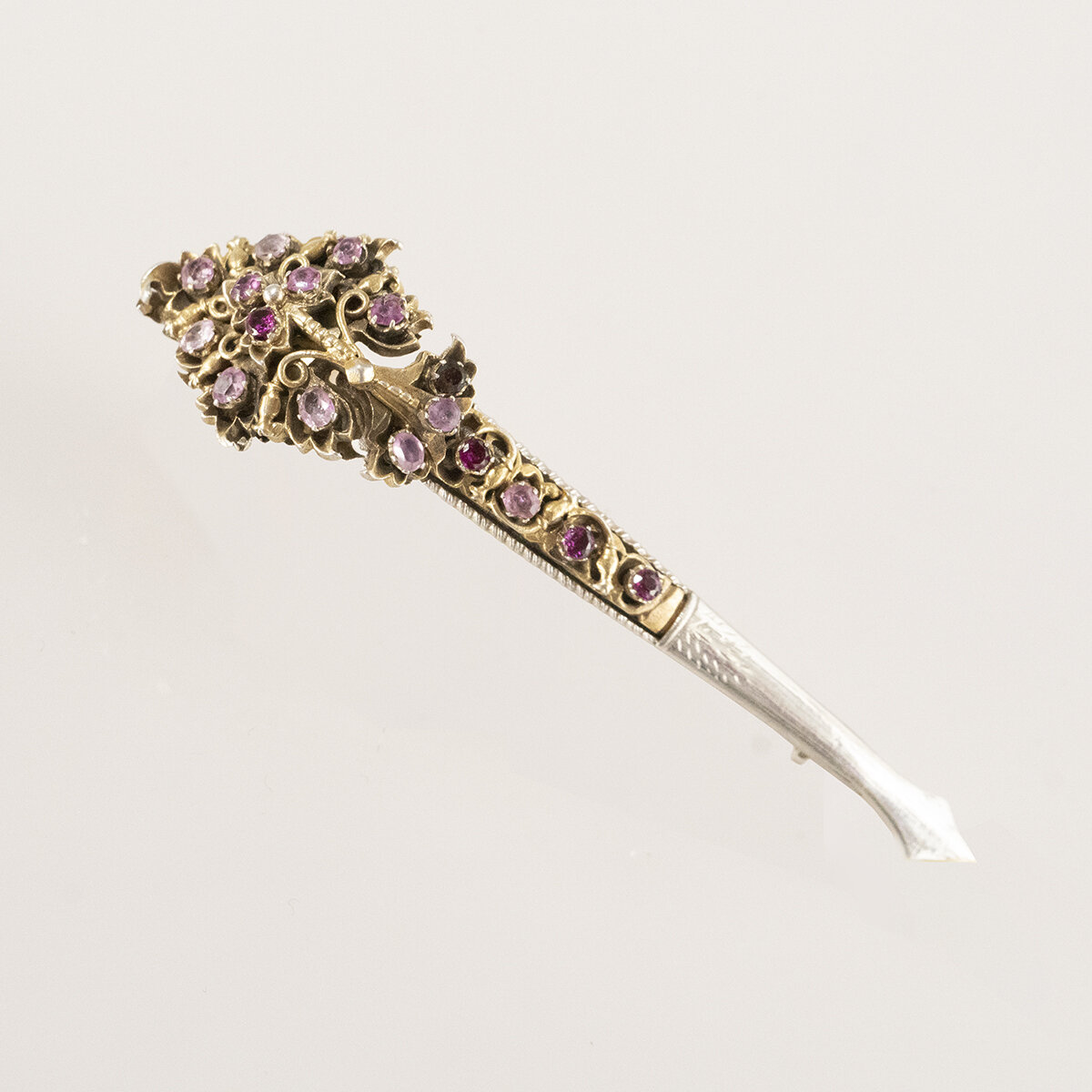Minnette de Silva, Sri Lanka’s First Modernist Architect
Handmade in Sri Lanka, ‘Minnette’ is a stunning brooch that has been re-purposed from a 19th-century hairpin. Photography by Derek Matthew Auxier Black
I admire de Silva for her talent, but she also the fact that she was a fierce woman ahead of her time. She introduced herself as the “Asian Woman Architect,” which was a rarity in the 1940s. De Silva was the first Sri Lankan woman to be trained as an architect who established her own practice in her home country and the first Asian woman to be elected an associate of the Royal Institute of British Architects (in 1948). While rubbing her shoulders with the big names in the art world in Europe, such as Le Corbusier and Picasso, she held her ground and wore bright, colourful sarees with flowers in her hair. An independent woman of her time, de Silva didn’t succumb to society’s expectation to marry. She allegedly confided to a friend that a husband was only good for carrying one’s bag.
Minnette de Silva with Pablo Picasso (left) at the World Congress of Intellectuals in Defense of Peace, 1948, from Wikipedia
Immensely talented with an eye for detail and space, de Silva was a pioneer who incorporated modern architecture in the Sri Lankan context. Under the influence of Ananda Coomaraswamy, who advocated for preserving Ceylonese arts and crafts, de Silva took every opportunity to revive her country’s local arts and craft industries. She commissioned artisans to create traditional weaving mats and fire clay tiles and incorporated them as details in her projects. Furthermore, de Silva also integrated the beginning of an open courtyard as a part of the living space, a practice from a previous era in Sri Lankan architecture. When the City of Kandy commissioned de Silva to remodel the Public Housing project in the 1950s, she implemented the principles of eco-architecture and participatory design. She interviewed future residents of the housing to understand their needs, which seem like common practice now but was revolutionary in the mid 20th century. De Silva called her architectural style Modern Regionalism, which came to be known as Critical Regionalism. This approach emphasizes function while ensuring that the structure is firmly rooted in its local context. As a result, de Silva’s work embraces the principles of Modernism while utilizing local topography, light source, materials, and craftsmanship.
Patterned tiles in De Saram House. Colombo 1957. Photograph: LASWA, from The Guardian.
Minnette de Silva was an accomplished Sri Lankan architect no one in her home country has heard of. Unfortunately, her legacy has been overshadowed by her fellow Sri Lankan architect Geoffrey Bawa, who came into fame in the 1960s as de Silva’s influence was waning. But little do Sri Lankans know, de Silva paved the way for someone like Bawa to be successful—many of his signature styles were inspired by de Silva’s practices. Sadly, most of de Silva’s projects, many of which were modest residential homes, have not survived under Sri Lanka’s quest to tear down old buildings to make room for skyscrapers. Bawa’s, on the other hand, have been preserved. Gallery Cafe by Paradise Road is the most famous example of a Bawa project, an upscale restaurant converted from Bawa’s Colombo studio. Derek and I visited the cafe numerous times while we lived in Sri Lanka—it serves fantastic Sri Lankan and western cuisine. I loved going there with friends for a glass of wine and a slice of their decadent chocolate cake. For dinner, my favourite was their pork curry.
Pieris House in Colombo is one of the few buildings designed by de Silva that still stands today. It still belongs to the Pieris family. From The Architectural Review.
Minnette de Silva, the talented, fierce, and innovative architect, has fallen under hard times and virtually forgotten by her country. In 1996, the Sri Lanka Institute of Architects finally recognized her contributions and awarded her an overdue gold medal. However, it was too little, too late—she died two years later, at age 80, on November 24th,1998, after falling in the bathroom of her derelict house. Part of her allure to me was that she burned so bright and faded so quickly, like a firework show. She crashed into the scene with a bang, burned brilliantly into the night sky with dazzling explosions, only to disappear into the darkness. I wish de Silva hadn’t died penniless and unappreciated. I wish she had a similar level of reverence as Bawa in Sri Lanka and that someone would restore her existing buildings to their original glory. I wish when someone mentioned a Sri Lankan architect, they would think of Minnette de Silva alongside Geoffrey Bawa.





